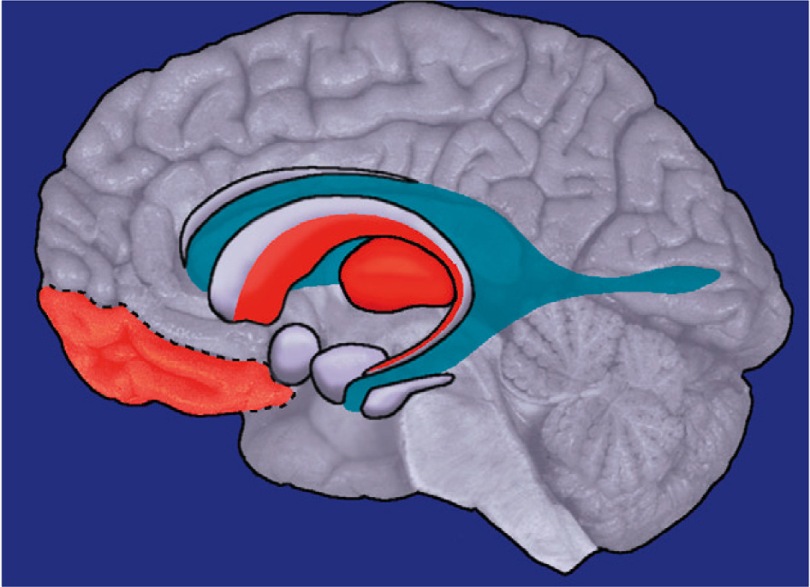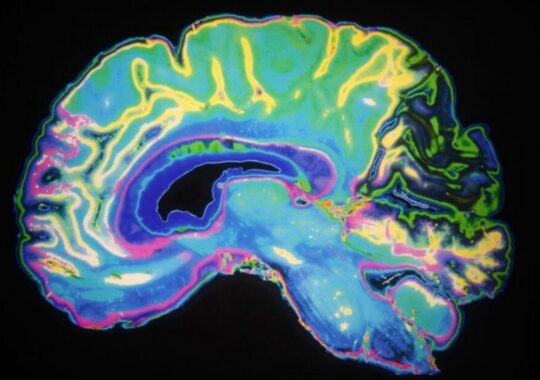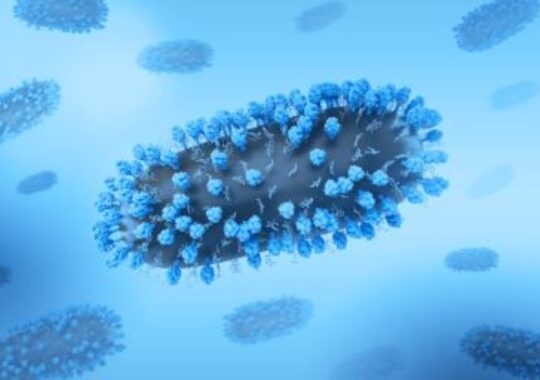Summary: Patients with Obsessive-Compulsive Disorder (OCD) had a neurochemical imbalance in their brains, according to the researchers. They discovered a disturbed balance between glutamate and GABA in two specific frontal lobe regions using magnetic resonance spectroscopy.
The imbalance was linked to a tendency toward habitual behavior and the severity of OCD symptoms. This ground-breaking research may lead to improved treatment options.
Important Information:
According to the findings of the study, people who suffer from OCD have an imbalance between the neurotransmitters glutamate and GABA in the supplementary motor area of the frontal lobes and the anterior cingulate cortex.
Higher glutamate levels in the supplementary motor region are linked to the propensity for compulsive and habitual behavior as well as the severity of OCD symptoms.
The study opens the door to new treatment options for OCD, including possibly medication that lowers glutamate levels.
Source: University of Cambridge Researchers discovered a neurochemical imbalance in the frontal lobes of patients with obsessive-compulsive disorder (OCD) by utilizing powerful new brain imaging techniques.
In OCD patients, the study demonstrates that in two frontal regions of the brain, the balance between glutamate and GABA, two major neurotransmitter chemicals, is “disrupted.”
In addition, the researchers discovered that one of these brain regions had elevated glutamate levels in people who did not have OCD but were more likely to engage in compulsive and habitual behavior.
The study’s neuroscientists claim that the findings will open up new treatment options for OCD, a psychiatric disorder that can severely disable up to 3% of Western populations.
The researchers measured levels of glutamate and GABA in areas of the cerebral cortex, the human brain’s outermost and most highly developed region, using magnetic resonance spectroscopy.
Glutamate is a neurochemical that “excites”: it works with electrical motivations that fire neurons to send data around mind organizations. GABA is an “inhibitory” synapse that works contrary to glutamate by hosing brain edginess, making an equilibrium.
When compared to people who did not have OCD, OCD sufferers had lower levels of GABA and higher levels of glutamate in the anterior cingulate cortex.
Additionally, higher glutamate levels in the supplementary motor region were linked to the severity of OCD symptoms and the tendency toward compulsive and habitual behavior. This was found to be the case in healthy participants with milder compulsive tendencies as well as in OCD patients.
The balance between our conscious goals and more automatic habits is largely determined by the anterior cingulate cortex and the supplementary motor area. According to the researchers, “compulsions arise from a dysregulated brain system for controlling habits.”
The Wellcome Trust provides funding for the study, and the most recent results are now available in Nature Communications.
Understanding obsessive-compulsive disorder is one of psychiatry’s central questions. Prof. Trevor Robbins, a senior author from Cambridge’s Department of Psychology, stated, “We have now shown definitive changes in these key neurotransmitters in OCD sufferers.” Overabundance glutamate and diminished GABA is upsetting the brain hardware in key areas of the OCD mind.”
“Our discoveries are a significant piece of the riddle for figuring out the instruments behind OCD. Based on the existing glutamate-regulating medications, the findings suggest novel OCD medication strategies. Particularly, medications that block presynaptic glutamate receptors,” Robbins stated. The part of a nerve cell that regulates the release of neurotransmitter chemicals is called a presynaptic receptor.
Serious OCD is a psychological wellness problem that causes untold hopelessness for certain victims. It can prompt loss of work and connections, and social seclusion. ” Robbins stated, “Patients can be kept in their homes for months on end due to symptoms of intrusive thoughts and repetitive rituals.” In outrageous cases, the absence of control and feeling of sadness brought about by OCD can bring about considerations of self destruction .
There are few OCD treatments available today. While individuals with milder side effects can profit from a few antidepressants, for those with serious side effects there are not many choices – frequently outrageous -, for example, profound cerebrum feeling and even neurosurgery to eliminate the front cingulate cortex.
“A few medicines as of now target glutamate unevenness indirectly,” said Dr Marjan Biria, concentrate on lead creator, who led the work in Robbins’ Cambridge lab. ” The reasons why certain approaches appear to have some positive effects are now supported by evidence.
One of only seven ultra-powerful 7-Tesla Magnetic Resonance Spectroscopy (MRS) scanners in the UK is located at the Wolfson Brain Imaging Centre in Cambridge. The most recent study used 30 healthy volunteers as a control group and 31 OCD sufferers who had been clinically diagnosed.
“Standard MRS scanners can be very poor at picking up the glutamate signal. Biria stated, “The 7-Tesla machine enables us to more precisely measure glutamate and GABA and separate the overlapping signals.”
In addition to scanning, researchers assessed all participants’ obsessive-compulsive and habitual tendencies through tests and questionnaires. A computer-based task was used to connect an action and reward in the test. As a measure of habit, the researchers then uncoupled this link and examined whether participants continued to respond.
According to Robbins, “We tested whether people were more prone to adapting their behavior to better pursue goals or repeating the same responses, like a habit.” While compulsions and habits are not the same thing, impaired regulation of habits can serve as the foundation for compulsions and divert individuals from their goal-directed behavior.
“The glutamate-GABA ratio was related to even the mildly repetitive behavior of healthy volunteers in the supplementary motor area, which is likely a controller of the habit system.”
However, glutamate and GABA levels in the anterior cingulate cortex were only elevated in clinical OCD sufferers.
According to the researchers, elevated glutamate levels may function as a “biomarker” for OCD. This may direct new treatments, such as medication and the non-invasive use of magnetic stimulation through the scalp, which is showing some promise for OCD treatment.
To better understand the underlying neural mechanisms of compulsive behavior, little research has been done on its neurochemical correlates.
By measuring glutamate and GABA levels in the anterior cingulate cortex (ACC) and supplementary motor area (SMA) of healthy volunteers and participants with Obsessive-Compulsive Disorder (OCD), we use 7-Tesla proton magnetic resonance spectroscopy (1H-MRS) to evaluate the equilibrium of excitatory and inhibitory neurotransmission.
In the SMA, compulsive behavior traits and clinical measures are linked to glutamate levels, while a behavioral index of habitual control is linked to glutamate levels: Ratio of GABA.
The latter relationship is also seen in OCD patients in the ACC, where glutamate levels are higher and GABA levels are lower. This study focuses on SMA mechanisms of habitual control that are common to both the healthy subclinical and OCD populations and are relevant to compulsive behavior.
The outcomes likewise show extra association of front cingulate yet to be determined between objective coordinated and ongoing answering in OCD.
Disclaimer: The views, suggestions, and opinions expressed here are the sole responsibility of the experts. No Clear Insight Research journalist was involved in the writing and production of this article.





